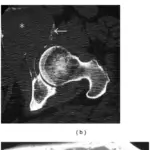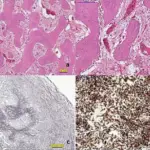Fibrous cortical defects are benign bony lesions and are a type of fibroxanthoma, histologically identical to the larger non-ossifying fibroma (NOF).
What is the Pathology of Fibrous Cortical Defects?
The pathology of fibrous cortical defects is:
-Etiology: The cause of fibrous cortical defects remains obscure.
-Genes involved: Unknown.
-Pathogenesis: The sequence of events that lead to fibrous cortical defects results from periosteal injury or secondary to abnormalities at the epiphyseal plate.
-Histology: The histology associated with fibrous cortical defects shows lesions to be highly cellular containing spindle-shaped cells on a background of stromal tissue in a prominent storiform pattern.
How does Fibrous Cortical Defects Present?
Patients with fibrous cortical defects typically affect males between 2-15 years of age. The symptoms, features, and clinical findings associated with fibrous cortical defects include mild swelling and tenderness to the touch.
How are Fibrous Cortical Defects Diagnosed?
Fibrous cortical defects are diagnosed by imaging scans such as MRI, CT scan, and bone scan.
How are Fibrous Cortical Defects Treated?
Fibrous cortical defects are usually self-limiting, therefore no treatment, biopsy, or even follow-up is required in typical cases.
What is the Prognosis of Fibrous Cortical Defects?
The prognosis of fibrous cortical defects is excellent in those unusual cases where patients require curettage and bone graft.



